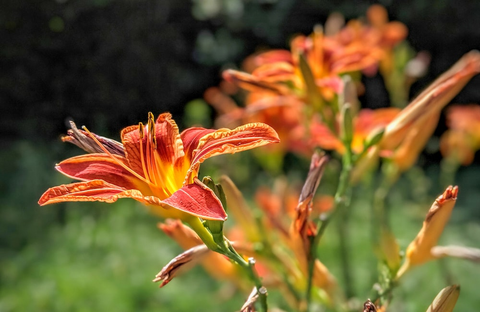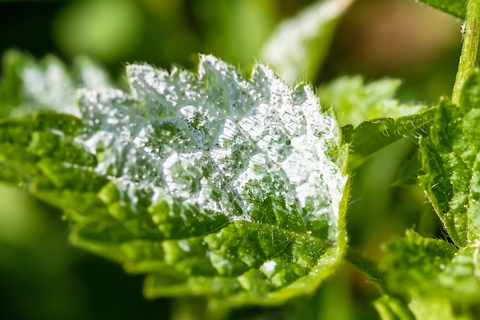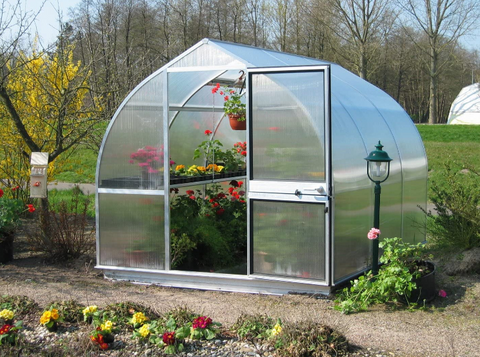Imagine the frustration of seeing delicate white patches slowly creeping across your beloved roses, zinnias, cucumbers, squash, melons, or tomatoes. Powdery mildew, a fungal disease, can turn your vibrant and thriving greenhouse into a battleground.
But fear not! In this blog, we will arm you with knowledge, insights, and an array of powerful greenhouse accessories to combat this formidable foe.
Understanding Powdery Mildew
Powdery mildew is a fungal disease that affects a wide range of plants, including ornamental flowers, fruits, and vegetables. It is caused by several different species of fungi, with each species having a preference for specific plant hosts. The fungi responsible for powdery mildew thrive in warm, dry environments, making greenhouses an ideal breeding ground.
Causes and Conditions for Powdery Mildew
Powdery mildew, a fungal disease that affects plants, is caused by several factors contributing to its development. Understanding these causes can help greenhouse gardeners effectively prevent and combat powdery mildew. Let's delve into each cause in detail:
- Fungal Spores: Powdery mildew is caused by various species of fungi, including Erysiphe, Sphaerotheca, and Podosphaera. These fungi produce microscopic spores that can easily spread and infect susceptible plant surfaces. Spores are typically carried by wind, insects, or other means of transportation, and when they land on susceptible plants, they germinate and initiate infection.
- Warm and Dry Environments: Powdery mildew thrives in warm and dry conditions, making greenhouses particularly susceptible. High temperatures ranging from 60°F to 80°F (15°C to 27°C) provide an optimal environment for fungal growth.
Unlike other fungal diseases that require free water for infection, powdery mildew can develop in the absence of moisture. High humidity levels and limited airflow in greenhouses create an ideal microclimate for spore germination and subsequent disease spread.
- Susceptible Plant Species: Commonly affected plants include roses, zinnias, cucumbers, squash, melons, tomatoes, and many ornamental flowers.
These plants often have specific characteristics that make them susceptible, such as dense foliage or a lack of natural resistance to powdery mildew fungi.
- Shady Conditions: Powdery mildew thrives in shaded areas where direct sunlight is limited. Overcrowded or poorly spaced plants in a greenhouse can create shady microenvironments that encourage the growth of powdery mildew. Insufficient light penetration inhibits the plants' ability to dry out quickly after watering or periods of high humidity, providing favorable conditions for fungal spore germination.
Consider buying a glass greenhouse such as the Exaco Royal Victorian Retro greenhouse if you want to increase light diffusion for your plants.
- Poor Air Circulation: Inadequate airflow within a greenhouse can contribute to the development and spread of powdery mildew.
Stagnant air increases humidity levels, prolongs leaf wetness, and prevents plants from drying effectively after watering or condensation events. Insufficient ventilation exacerbates the problem by allowing the buildup of moisture and increasing the likelihood of spore germination.
Mulberry Greenhouses offers a wide range of greenhouse kits and accessories. We also offer quality and brand-new Exaco Janssens Royal Victorian VI36 and VI46 Greenhouses, the Riga XL greenhouse, Solexx polycarbonate greenhouses, and exhaust fan systems, among more.
With our commitment to outstanding customer service, we are here to assist you in creating a healthy and thriving greenhouse environment.
Which Plants Are More Vulnerable to Powdery Mildew
Some plants are inherently more susceptible to powdery mildew, a fungal disease that can cause significant damage to their growth and overall health. Understanding which plants are more prone to powdery mildew can help greenhouse gardeners take proactive measures to prevent and control the disease. Here are some commonly affected plants:
- Roses: Roses are highly susceptible to powdery mildew. The dense foliage and the presence of numerous crevicesand overlapping leaves provide an ideal environment for the fungi to thrive. Powdery mildew on roses can lead to distorted growth, stunted flowers, and premature leaf drop, affecting the overall beauty and vigor of the plants.
- Zinnias: Zinnias, popular annual flowering plants known for their vibrant colors, are also susceptible to powdery mildew. The large, broad leaves of zinnias create a favorable surface for the fungal spores to settle and germinate.
Powdery mildew can cause leaf discoloration, curling, and distortion, leading to reduced aesthetics and compromised plant health.
- Cucumbers: Cucumbers are highly susceptible to powdery mildew, particularly when grown in greenhouses. The warm and humid conditions inside a greenhouse provide an ideal environment for the disease to develop and spread.
- Melons: Melon plants, such as watermelon and cantaloupe, are also susceptible to powdery mildew. The large leaves and vigorous growth of melon vines create an environment where powdery mildew can easily establish and spread. Powdery mildew can lead to melon plants damage by reducing fruit size, causing premature fruit ripening, and compromising the plant's ability to photosynthesize effectively.
- Tomatoes: Tomatoes, a widely grown greenhouse crop, are susceptible to powdery mildew, especially during periods of high humidity and limited airflow. Powdery mildew on tomato plants can affect leaf health, leading to reduced photosynthesis and fruit development. It can also cause blemishes on the fruit, reducing its market value and overall desirability.
Prevention and Control Measures
Here’s how you can prevent powdery mildew from harming your plants:
- Proper Ventilation: Ensuring adequate air circulation within your greenhouse is crucial to prevent powdery mildew. Consider installing a durable greenhouse, such as the Exaco Janssens Retro Royal Victorian VI36 Greenhouse or the Riverstone MONT greenhouses. These can be integrated with greenhouse fans to promote airflow, reduce humidity, and create an unfavorable environment for fungal growth.
- Light Management: Powdery mildew thrives in shady conditions, so maximizing sunlight exposure within your greenhouse can be beneficial. Consider the Riga XL greenhouse, which offers excellent light transmission due to its high-quality glazing materials like Solexx polycarbonate covering. This helps to create an environment less conducive to powdery mildew development.
- Proper Plant Spacing: Ensure adequate spacing between plants to promote airflow and reduce humidity levels. This will help prevent the rapid spread of powdery mildew among closely located plants.
- Cultural Practices: Adopt good gardening practices, such as avoiding overhead watering, as excess moisture can contribute to the development of powdery mildew. Instead, water at the base of plants, keeping foliage as dry as possible. Additionally, remove any infected plant material promptly to prevent the disease from spreading.
- Fungicidal Treatments: In severe cases, fungicides may be necessary to control powdery mildew. However, it is crucial to select an appropriate product and follow the instructions carefully. Consider the Exaco Janssens Cathedral Victorian Orangerie Greenhouse, which provides ample space to accommodate larger plants while allowing for proper fungicidal application.
Remember, at Mulberry Greenhouses, you are not just a customer; you are part of our family. Shop with us today and experience the difference firsthand!




